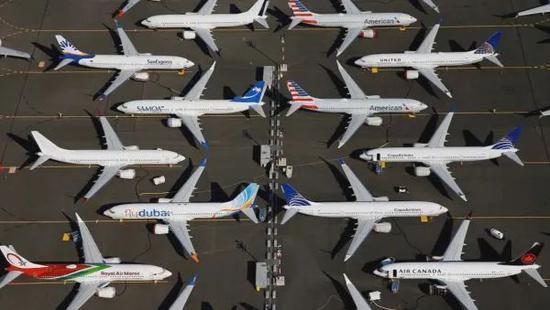December 3rd local time, Boeing, the largest aircraft manufacturer in the United States, and Ryanair, the largest airline in Europe, announced that Ryanair will add 75 737 MAX aircraft, thus increasing its total order to 210 737 MAX aircraft.
It is worth mentioning that this is the first order announced by Boeing after the FAA cancelled the grounding order of the 737 MAX.
By the close of December 3rd local time, Boeing’s share price rose 5.96% to $237.2 per share.
Michael O’Leary, CEO of Ryanair Group, said, “The board of directors of Ryanair is confident that customers will like these new aircraft. Passengers will enjoy a new interior, more spacious legroom, lower fuel consumption and quieter environment. Most importantly, our customers will love lower fares.”
Michael O’Leary revealed that the 737 MAX aircraft it receives will be serviced starting in 2021 and will continue to provide service for the next decade.”
On the same day, Michael O’Leary and Ryanair’s leadership team and the Boeing team participated in the signing ceremony in Washington, D.C. Both companies said that COVID-19 will have an impact on air traffic in the short term, but expressed confidence in the recovery of long-term passenger demand.
Michael O’Leary said, “Once the COVID-19 virus subsides (and it is likely that multiple effective vaccines will be launched in 2021), Ryanair and its partner airports across Europe will quickly resume flights and timetables and restart the air with these environmentally friendly and efficient aircraft. Transport and helping European countries to resume tourism, bringing young people back to work in cities, beaches and ski resorts in the European Union.”
Ryanair, the first customer of the 737 MAX series, first ordered 100 aircraft in late 2014, and then confirmed 10 and 25 aircraft in 2017 and 2018, respectively.
Dave Calhoun, president and CEO of Boeing, said, “We are glad that Ryanair has once again established confidence in the Boeing 737 MAX series. Boeing remains focused on safely resuming the full 737 MAX fleet and is committed to delivering aircraft to customers, including Ryanair. We have confidence in this aircraft and we will continue to work hard to regain the trust of all our customers.”
At present, regulators in the United States, Europe and Brazil have approved software revisions and new pilot training courses for the 737 MAX. Among them, after a long technical review of Boeing’s software upgrade, U.S. and Brazilian regulators lifted the flight ban on the 737 MAX last month, and European security officials gave preliminary approval.
From October 2018 to March 2019, Boeing 737 MAX series aircraft suffered two crashes in five months, causing 346 deaths. Both air crashes were related to the wrong activation of automatic stall software on the aircraft. The plane was subsequently grounded worldwide.
In December 2019, Boeing announced that Boeing would suspend production of the 737 MAX from January 2020 because the certification of 737 MAX aircraft will be extended until 2020.
On May 27, 2020, Boeing announced that it had resumed production of the 737 MAX at a lower production rate at its Renton plant in Washington, United States.
On June 29, 2020, after reviewing the manufacturer’s proposed modification to improve safety, the FAA approved the start of Boeing 737 MAX test flights, which meant that regulators finally endorsed the Boeing 737 MAX aircraft safety improvement proposal.
In July 2020, the FAA said it had completed a certified test flight of the 737 MAX with Boeing, which was a key milestone for the aircraft to be re-entered service.
On November 18, 2020, the Federal Aviation Administration (FAA) announced on its official website that it approved the Boeing 737 MAX to resume.
On November 24, 2020, European aviation regulators granted a draft approval for the Boeing 737 MAX, which will pave the way for the aircraft to officially resume in Europe in January next year.
So far, the Civil Aviation Administration of China has expressed its position on whether the 737 MAX will be re-flyed. There is no timetable for the re-flight of the aircraft, and the previous three principles remain unchanged: the aircraft’s design changes must be approved for airworthiness; the pilot must be fully and effectively trained; and the findings of the two accidents must be It must be clear and the improvement measures are effective.



